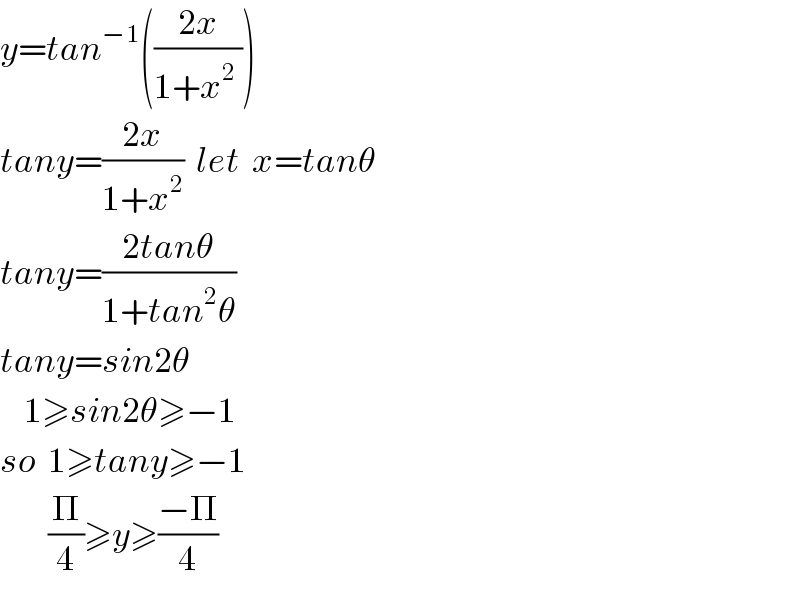
Question and Answers Forum
Previous in Relation and Functions Next in Relation and Functions
Question Number 35769 by Tinkutara last updated on 23/May/18

Answered by ajfour last updated on 23/May/18
![let f(x)=((2x)/(1+x^2 )) ((df(x))/dx)=((2(1+x^2 )−4x^2 )/((1+x^2 )^2 )) = ((2(1−x)(1+x))/((1+x^2 )^2 )) ⇒ f(x)_(min) = f(−1) = −1 f(x)_(max) =f(1) = 1 Hence y=tan^(−1) [f(x)] has range ∈ [−(π/4) , (π/4)] .](Q35774.png)
Commented by Tinkutara last updated on 23/May/18
Is f(x) increasing or decreasing continuously?
Commented by ajfour last updated on 23/May/18
decreasing, then increasing, then again decreasing.
Commented by Tinkutara last updated on 23/May/18

Commented by ajfour last updated on 23/May/18

Commented by Tinkutara last updated on 23/May/18
Thank you very much Sir! I got the answer. ��������
Answered by tanmay.chaudhury50@gmail.com last updated on 24/May/18

Commented by Tinkutara last updated on 24/May/18
Thank you very much Sir! I got the answer. �������� Nice method.
